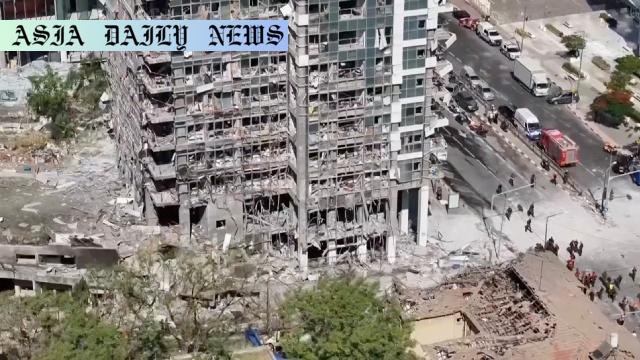Israel-Iran Conflict: Israel escalates strikes on Iran’s infrastructure, damaging nuclear sites and raising international concerns.
Israel conducted major airstrikes targeting Tehran’s nuclear facilities.
The Khondab nuclear site in western Iran sustained severe damage.
Satellite images reveal significant impact on Iran’s infrastructure.
Iran responded with missile strikes, causing injuries in Beersheba.
Attention turns to potential U.S. involvement in the Fordow facility.

Israel Continues Strikes on Iran’s Infrastructure
The geopolitical landscape in the Middle East is growing increasingly unstable as Israel and Iran escalate their ongoing military conflict. Over the past two weeks, Israel has carried out a series of airstrikes targeting key Iranian facilities, with a focus on infrastructure associated with nuclear weapons development and missile production. The latest developments have drawn attention from the international community, heightening fears of broader regional consequences.
Israeli forces launched a series of overnight airstrikes in central Tehran on Friday, striking targets that allegedly contribute to Iran’s nuclear capabilities. These strikes included Iran’s research headquarters for the development of nuclear arms and various missile manufacturing sites. Israeli officials have maintained a strong stance regarding their resolve to neutralize perceived nuclear threats posed by Iran, underscoring the determination to act unilaterally if necessary.
Khondab Reactor Facility Severely Damaged
The International Atomic Energy Agency (IAEA) has confirmed reports that the Khondab nuclear reactor facility in western Iran suffered considerable damage. Satellite images provided by Maxar Technologies visually document the destruction inflicted upon the site. One notable pre- and post-attack comparison reveals the central reactor building, previously intact, now features a large hole alongside fire damage. Surrounding infrastructure has been reduced to rubble, suggesting the widespread impact of Israel’s targeted military efforts.
The destruction of the Khondab site has heightened global security concerns, emphasizing the vulnerability of Iran’s nuclear facilities to external attacks. This development has also prompted discussions among international powers, as experts debate the potential for broader retaliation and its repercussions on global stability.
Iranian Missile Retaliation and Civilian Impact
In retaliation, Iran launched a missile strike that struck the southern Israeli city of Beersheba. While the attack caused only minor injuries to seven individuals, it served as a stark reminder of how the conflict has spilled beyond the military domain, affecting civilians. Statements from both sides suggest the possibility of further escalations, with neither showing a willingness to de-escalate at this stage.
The Iranian missile strike also underscores the danger of the conflict extending into more populated areas, raising humanitarian concerns. Civilian safety has now become an underscore in the unfolding narrative, further complicating an already tense situation.
Focus Shifts to Fordow’s Underground Nuclear Facility
Reports have surfaced indicating the possibility of the United States intervening in the conflict. Attention is turning to the underground nuclear site at Fordow, located in central Iran. This facility, known for its deeply buried infrastructure, has attracted significant international concern as a key element within Iran’s nuclear program. The prospect of the U.S. deploying


